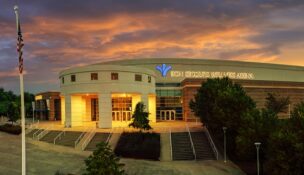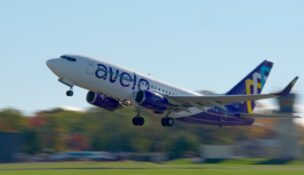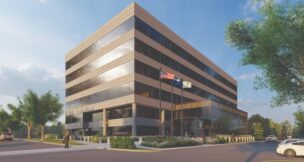CAE executive director eyes more improvements, development
Staff //November 15, 2019//
Since taking over as executive director of Columbia Metropolitan Airport in 2018, Michael Gula has been thinking of ways to improve and develop the facility.
Before he was promoted to executive director, Gula spent four years as director of operations, planning and facilities for CAE. He believes that improvements which make travel easier and more efficient for passengers will increase the number of visitors passing through the airport.
In September, the airport announced two improvement projects intended to make it more efficient for passengers to check in and to quickly find an open space in the parking garage.
CAE is in the process of upgrading its baggage check-in system to a fully automated, inline handling system. It also is installing a system on the second level of the parking garage that identifies open spaces. Eventually, Gula said the airport could expand the parking notification system to other floors of the parking deck.
“My vision for the airport right now is to just continue to grow with the momentum that we’re currently seeing — not only the airport, but the Midlands region as a whole,” he said.
CAE passenger traffic in 2018 was the highest it’s been in a decade, increasing by 11% from 2017. Based on 2019 numbers through the third quarter, the airport is on pace to see a 19% increase in passenger traffic in 2019.
Growth in passenger traffic is what airlines look at when considering lowering fares and adding flights, Gula said. The more people who use the airport, the more flight options and the lower the fares, he said.
“That’s really the message that we’re trying to get out there into the community,” he said. “People love to use this airport because it is so convenient and easy to get through. But definitely, the fares play a huge role on whether or not they decide to fly out of here or go to Charlotte.”
Gula said Charlotte Douglas International Airport is where most of CAE’s “leakage” goes, but he said Columbia’s fares are more competitive now. He said airports cannot negotiate fares, as airlines have their own pricing schemes.
The travel needs of the U.S. Army into and out of Fort Jackson accounts for about 20% of the traffic and a consistent weekly flow of passengers at the airport. Business travel accounts for 70% of passengers, while leisure travelers make up another 10%.
While focused on increasing the number of passengers, Gula also is working on growing development on the airport property. About 250 to 300 of the airport’s 2,200 acres have development potential, he said.
“We’ve got a lot of property out here that has really sat stagnant for quite some time, so we’re doing our due diligence to make sure those properties are ready to go when a new customer comes to us,” Gula said.
One option includes about 75 acres near the cargo side of the airport, which could be a good location for a distribution center supporting UPS and FedEx operations. Gula said he would like to see UPS and FedEx expand their operations at CAE.
Another part of the property Gula would like developed is a 70-acre business park across Edmund Highway, which could include spec buildings to provide options for distribution and fulfillment facilities.
To continue its growth, Gula said the airport needs the support of the Midlands community, and that goes beyond beginning and ending journeys at CAE.
“We’re really trying to get the community involved with the airport and help us as we move forward,” he said.
Gula and airport officials have been nurturing relationships with development and community business organizations such as the Central SC Alliance. He said the airport provides more than 1,800 full-time jobs and more than $80 million in labor income, with a regional economic impact of $540 million. The airport does not receive public funding.
The airport has also embraced alternative energy, Gula said. A five-acre solar farm on the south side of the airfield generates 1.38 megawatts annually and saves the airport $280,000 a year on utility bills, while the replacement of more than 2,800 lighting fixtures in 2017 with energy-efficient LED lights generates $11,000 a month in utility savings.
Kim Jamieson, CAE director of marketing and air service, said the airport is always open to opportunities to work with area businesses. She said airport officials meet with Midlands-area businesses to determine their travel needs and find out where and when their employees need to travel, then pass that information along to the airlines that service CAE.
She said it can take years of negotiations to get a carrier to add a flight or route to the airport.
Another goal for CAE, currently updating a 10-year master plan, is landing a low-cost carrier such as Southwest or Spirit. Gula said CAE, currently served by United, American and Delta, is the largest small-hub airport that does not have a low-cost carrier.
“That goes back to the community and the involvement,” he said. “We’ve had them here before, and the support just wasn’t there at the time.”
Gula said airport officials try to be responsive to the community’s requests for routes. Beginning Dec. 19, American will offer a nonstop flight to Miami from CAE.
“What people are looking for now is that southwest Florida region, whether that’s for leisure or business,” Gula said. “Orlando’s been a big one for business because business is booming there as well. I would love to see us get something out west, to the Denver area.”
This article first appeared in the Nov. 4 print edition of the Columbia Regional Business Report.
t

















